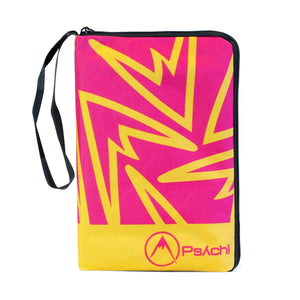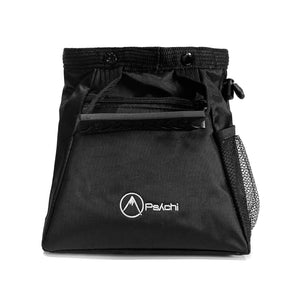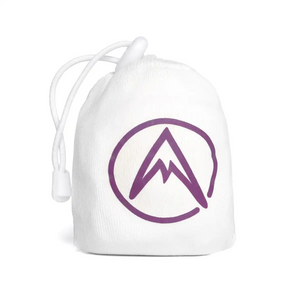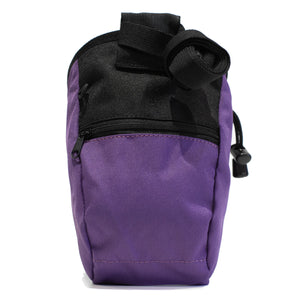BEST CLIMBING SHOES 2022
New to rock climbing and looking to buy your first pair of climbing shoes? Perhaps you’ve been wearing the rental shoes at your local climbing gym for a while and want to invest in a pair to call your own.
Choosing your first pair of climbing shoes is a little different to picking out a street shoe. With technical performance, comfort and durability as well as price and style to consider, the climbing shoe market can often feel overwhelming. There's a wealth of different options and styles to choose from and each bouldering shoe will have specific advantages depending on what you want to use it for. Whatever your climbing style, investing in your own pair of climbing shoes will help you to feel more comfortable and confident on the wall.
To help you find the best fit for your first pair, we’ve compiled a list of our favourite options for the best beginner climbing shoes on the market in 2022.
OVERVIEW OF SHOES
*on mobile scroll left and right to see full table
| Climbing shoe | Best for | Overall rating | Closure | Upper | Rubber type | Weight | Price |
| La Sportiva Tarantulace | All round | 9/10 | Lace | Leather | 5mm FriXion RS | 218g | £75.00 |
| Boreal Jokers | Durability | 7/10 | Strap | Split leather and microfiber | Boreal ZENITH Quattro | 260g | £80.00 |
| Scarpa Veloce | Indoor Climbing | 8/10 | Hook and loop | Suede & Microfibre | S72 Rubber | 195g | £115.00 |
| Evolve Defy | Affordability | 7/10 | Opposing strap | Synthetic | TRAX SAS | 210g | £80.00 |
| Scarpa Origin | Starting out | 6/10 | Strap | Suede | SCARPA Vision Rubber | 225g | £76.00 |
| Five Ten Mocasym | Wide feet | 6/10 | Slip on | Leather | C4 Rubber | 245g | £99.99 |
1. THE LA SPORTIVA TARANTULACE. THE BEST ALL-ROUNDER
*on mobile scroll left and right to see full table
| Climbing shoe | Best for | Overall rating | Closure | Upper | Rubber type | Weight | Price |
| La Sportiva Tarantulace | All round | 9/10 | Lace | Leather | 5mm FriXion RS | 490g | £75.00 |
If comfort is high up on your priority list, the La Sportiva Tarantulace climbing shoes offer a snug, precise fit that’s kinder on your toes!
Marketed as the ‘best all-around shoe for beginners’ the Tarantulace model offers a great option for long wear at the indoor climbing wall, whilst sporting a performance-focused, asymmetrical design that moulds to the natural shape of your foot.
Made with a mix of soft unlined leather and synthetic fabric, the Tarantulace offers a great structured shape with no compromise on comfort. The cushioned tongue helps to control moisture, making long sessions in these shoes more comfortable. The easy lace system ensures greater control over fit, whilst the Durable FriXion® RS rubber gives grip and durability that you can trust on those rough indoor walls!
The Tarantulace’s comfortable fit makes them a great beginner climbing shoe option and their reasonable price doesn’t deter the climber on a budget!
2. BOREAL JOKERS - BEST FOR DURABILITY
*on mobile scroll left and right to see full table
| Climbing shoe | Best for | Overall rating | Closure | Upper | Rubber type | Weight | Price |
| Boreal Jokers | Durability | 7/10 | Strap | Split leather and microfiber | Boreal ZENITH Quattro | 260g | £80.00 |
Common advice you’ll come across when buying your first pair of climbing shoes is to opt for something affordable and durable. As a new climber, you’re likely to wear through your first pair of shoes more quickly, so it may pay to consider a more durable rubber when buying your first pair of climbing shoes.
The Boreal Jokers offer a durable construction with a stiffer rubber which feels supportive and thick, yet comfortable and sensitive enough to feel what you’re standing on. The Jokers feature Boreal’s well-trusted FS-Quattro rubber, ensuring good grip on a range of terrain. Available in lace-up or with velcro straps, the shoe fits snug to the shape of your and will reliably keep its shape over time.
The slimmer fitting, cushioned heel on the Jokers makes them an ideal choice for the beginner climber or boulderer with a penchant for heel hooks.
3. SCARPA VELOCE: BEST FOR INDOOR CLIMBING
*on mobile scroll left and right to see full table
| Climbing shoe | Best for | Overall rating | Closure | Upper | Rubber type | Weight | Price |
| Scarpa Veloce | Indoor Climbing | 8/10 | Hook and loop | Suede & Microfibre | S72 Rubber | 431g | £115.00 |
The Scarpa Veloce are a solid choice for those just starting out in the indoor gym. If you’re likely to be spending most of your time climbing indoors, then the Scarpa Veloce is a great option for a beginner climbing shoe.
Designed specifically for indoor climbing, The Scarpa Veloce model features a moderate downturn and synthetic suede construction. Whilst beginner climbing shoes can often be stiff and inflexible, the soft, slightly downturned toe on the Veloce’s make them much more sensitive and well suited to standing on indoor holds on a slight overhang. Their Relaxed Performance Fit makes for a little extra room in the toe area, making them a reliable option for long wear over sessions in the gym.
Adjusting the Veloce’s is simple and quick as they feature a wave strap system which secures your foot quickly. The synthetic upper also adds to the shoe’s comfort levels, and you can rest assured that stretch will be minimal!
4. EVOLV DEFY: MOST AFFORDABLE
*on mobile scroll left and right to see full table
| Climbing shoe | Best for | Overall rating | Closure | Upper | Rubber type | Weight | Price |
| Evolve Defy | Affordability | 7/10 | Opposing strap | Synthetic | TRAX SAS | 8.5oz per shoe | £80.00 |
The Evolv Defy model has been a popular climbing shoe choice for beginners for years and with good reason.
Their comfortable fit, versatile application and attractive price make these shoes a great choice for those wanting to get volume in without worrying about wearing holes in their toe rubber. Known for their performance on sketchy smears and slabs, the flexible midsole and high-friction rubber technology will give you a little extra confidence on the wall.
Recently, Evolv has added and revised some features to improve fit, and odour control as well as now offering a vegan-friendly option, and all for the same affordable price.
The enhanced, antimicrobial mesh helps with odour control which is always a huge plus when it comes to climbing shoes. Areas of higher wear have been designed to be thicker and more durable than other areas of the shoe, ensuring these shoes are long-lasting and stable!
In full, the Evolv Defy climbing shoes are a beginner climbing shoe with a technical edge - able to deal with all terrains well, and comfortable enough to keep on your feet all day.
5. SCARPA ORIGIN - BEST FOR GETTING USED TO CLIMBING
*on mobile scroll left and right to see full table
| Climbing shoe | Best for | Overall rating | Closure | Upper | Rubber type | Weight | Price |
| Scarpa Origin | Starting out | 6/10 | Strap | Suede | SCARPA Vision Rubber | 7.2oz per shoe | £76.00 |
If you’re looking for a great, entry-level shoe with a small price tag, you may want to opt for the Scarpa Origin. The Scarpa Origin is one of the best beginner’s climbing shoes, owing to the fact that it’s been designed specifically with novice climbers in mind. Scarpa designer Heinz Mariacher wanted the Origin’s “to encourage people to start climbing,” and this is certainly reflected in their comfortable, padded fit.
As a comfortable, easy-wearing beginner's climbing shoe, the Origins are an ideal shoe for those wanting to gain mileage in confidence. The Origin’s hit the perfect blend of performance and comfort for those starting out. Their relaxed fit and wider forefoot ensure optimal comfort in the gym or on the crag. The improved heel design gives support to the Achilles as you climb. A padded upper fabric feels comfortable and soft against your feet and whilst the toe rubber is soft and forgiving on the toes, the Origin’s still perform well with more technical climbing techniques.
Edging and smearing on small footholds isn’t an issue with the Scarpa Origins, giving you greater confidence as you improve. Easy, velcro closure makes taking the shoes on between climbs hassle-free and the friendly price tag is a big bonus!
6. FIVE TEN MOCASYM - BEST FOR WIDE FEET
*on mobile scroll left and right to see full table
| Climbing shoe | Best for | Overall rating | Closure | Upper | Rubber type | Weight | Price |
| Five Ten Mocasym | Wide feet | 6/10 | Slip on | Leather | C4 Rubber | 245g | £99.99 |
As well as being a great option for the climber on a budget, Five Ten’s classic slip-on climbing shoe features a wide toe box design, making it a great fit for those with wide feet. Known for their comfortable fit and stretchiness, the Mocasyms are easily taken on and off, though it should be noted that these shoes will give over time, and sizing down might be wise. Their flexibility and relaxed fit makes them best suited to smearing and standing on big edges, but if teetering on sharp edges is more your thing, you might want to look at a stiffer option. These shoes also have a rather specific strength - due to their soft midsole they’re widely regarded as excellent shoes for crack climbing!
FEATURES GUIDE.
When choosing your first pair of beginner climbing shoes, you’re likely to stumble upon a whole host of available features and characteristics to choose from. This quick glossary of terms will help to demystify the features you might come across whilst searching for the perfect pair!
Features like fit, closure type, lining material and type of rubber used in the sole will all affect the performance of your climbing shoe and the best choice for you will depend on the size and shape of your feet.
FIT
To accurately assess the fit of your climbing shoe, you’ll want to pay attention to how it moulds to your foot around some key areas: the tox box, heel and along the arch of your foot.
Common advice is to size down from your regular street shoe size for that all important sensitivity, but as a beginner climber, you don’t want your shoes to be painful.
Although it’s best to steer clear of the super-tight toe crushing shoes, you don’t want your shoes to be baggy on your feet either - this could make them more likely to shift on your feet as you climb, causing slips. Climbing shoes should feel tight, but not too painful.
The best way to ascertain fit is to try on a pair before you buy.
Our fitting advice:
- Ensure that your shoes are tight around your toes with little to no wiggle room. Your toes might be slightly compressed in the toe box, but not painfully bunched up! This will ensure that you can rely on those foot placements without worrying about your toes shifting position in the shoe as you climb.
- The shoe should fit snugly to your heel, with no ‘loose’ rubber in the heel. You should also avoid shoes that press painfully on your Achilles tendon.
- You can expect your climbing shoes to give over time, allowing for stretch in the material. The rate of stretch will differ depending on the materials used.
- Everyone's feet are slightly different, but if your shoe is painfully uncomfortable or really difficult to get on your foot, you probably need a bigger size.
SHAPE
Different shoes have different shapes and profiles depending on which style of climbing they suit best. The three main profiles of shoes are flat and downturned. Some shoes will be shaped to perform well on all types of terrain.
Flat profiled shoes likely to be best for beginner climbers. As they generally manipulate the foot into unnatural positions less, they are more comfortable when you’re just starting out. Flat profilled shoes are also an ideal option for when you’re likely to be on the wall for a long time, and need something suited to long wear. Many beginner climbing shoes will lean towards a flatter profile.
Downturned shoes are shaped more ‘aggressively’, with a down turn in the toe to make light work of steep terrain. Due to the slightly arched mould, downturned shoes enable greater performance on overhanging routes and boulders as they act more effectively to ‘hook’ you into the wall.
ASYMMETRICAL VS SYMMETRICAL.
Asymmetrically designed climbing shoes can improve performance by encouraging the big toe to generate power, enhancing precision and stability on tiny footholds whilst climbing. For climbing with very small holds and edges, an asymmetrical design can be ideal. Symmetrical climbing shoes are much more comfortable though, and will likely suit the beginner climber better.
RUBBER
The thickness and durability of the rubber on the sole of your climbing shoe is an important consideration. As a beginner climber, your footwork is likely to be less precise and heavier which makes a thicker rubber preferable for ensuring your shoes don’t wear quickly.
Some beginners' shoes will prioritise thicker rubber at the toe to give extra longevity but this can compromise sensitivity - how much you can feel through the shoe in layman's terms.
CLOSURE
LACEUP
The main benefit of a lace-up climbing shoe is that they give you the most precise fit and you have greater control over how tight the shoe fits to your foot. The downside is that unlancing and lacing your shoes between attempts can be time consuming.
VELCRO
Velcro closures, such as the double velcro closure and hook-and-loop fastening are the fastest choice when it comes to closure type. Velcro offers a quick and easy way to get your climbing shoes off and on, which is a big plus if you’re taking your shoes off between climbs.
SLIP ON
The easiest way to put on your shoes is to just slip them on, however Slip on climbing shoes leave little room for customization in fit. They are also liable to slip off your foot when pulling hard on a heel.
UPPER MATERIAL AND LINING MATERIAL
For upper material, you’ll generally have the choice between leather or suede, or a synthetic material.
LEATHER AND SUEDE
Leather and suede climbing shoes are typically more comfortable than a synthetic material, however leather stretches over time. This can be advantageous as it allows the material to mould better to your foot, but it can also mean your shoes begin to lose their shape and structure after a while.
SYNTHETIC
Synthetic uppers on the other hand are much more robust and maintain their shape much better. This does compromise on comfort though, and makes for a much less stretch and mould to your foot shape. An important thing to consider is how breathable the different materials are. Synthetic uppers don't breathe as well as their natural counterparts and can result in foot odour, whereas leather shoes are often more breathable in warmer conditions, especially if they’re unlined.
Of course, Synthetic options are also increasingly popular as a cruelty free and vegan climbing shoe option.
TRY BEFORE YOU BUY
If you’re still not sure which is the best beginner climbing shoe option for you, we recommend trying a few pairs on to get a feel for them. Every foot is different, and it’s difficult to know for sure without trying before you buy.
Most climbing gyms have a shop on sight or there may be a climbing shop in your area where you can try a couple of different options. We’d recommend asking a member of staff to talk you through the best options for you.
WHY NOT CHECK OUT SOME PSYCHI PRODUCTS?
If you are reading up on climbing and bouldering techniques for beginners, you may well be interested in our:

























